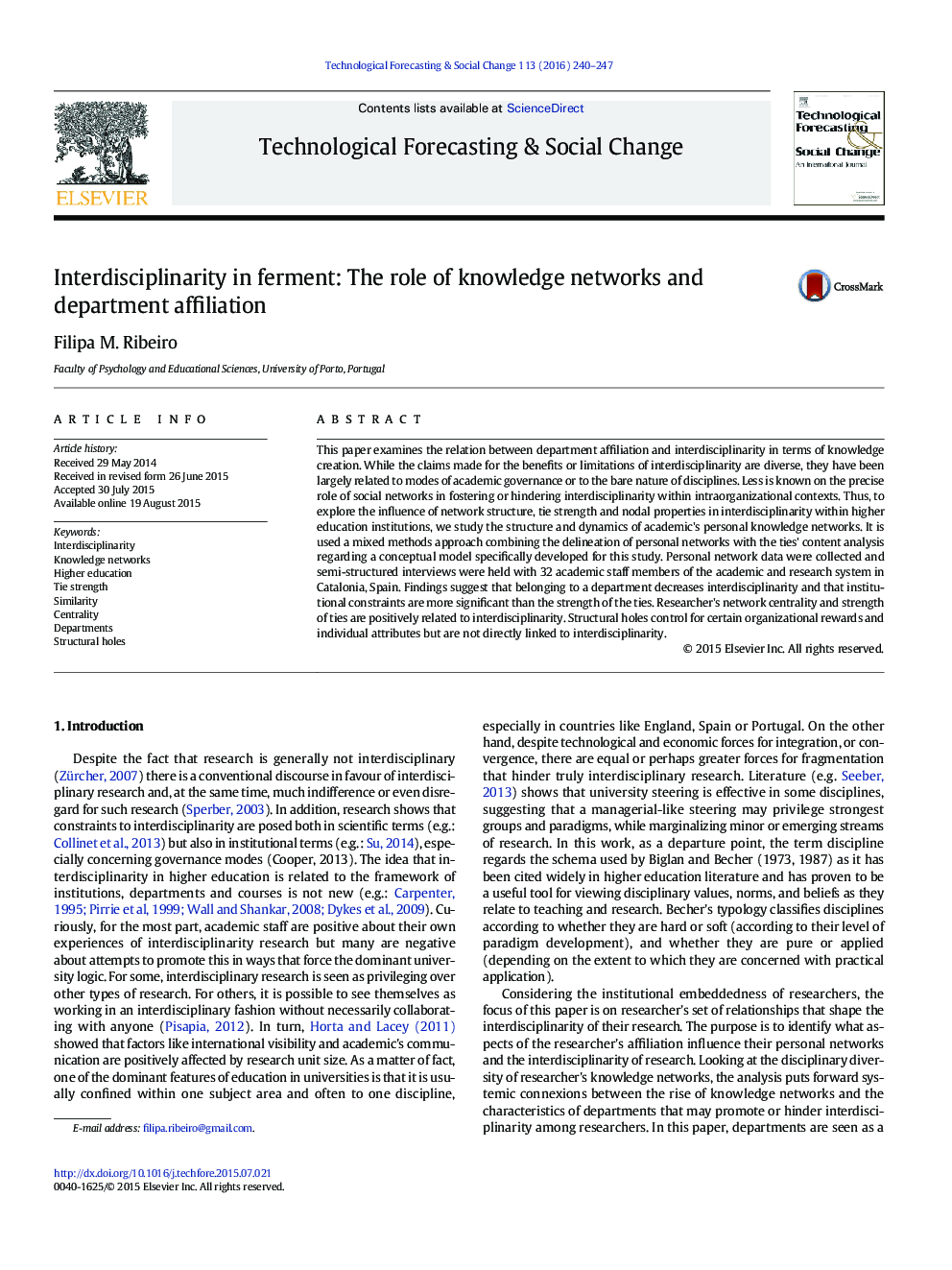| کد مقاله | کد نشریه | سال انتشار | مقاله انگلیسی | نسخه تمام متن |
|---|---|---|---|---|
| 5036965 | 1370204 | 2016 | 8 صفحه PDF | دانلود رایگان |
- Strong correlation between the network members nominated in the influence generator and interdisciplinarity
- Stronger ties seem to be more conducive of interdisciplinary research than weaker ties.
- Strong ties with dissimilar others are as important for interdisciplinarity as strong ties with similar others.
- Academic position of the ego is associated with interdisciplinarity.
- Belonging to a faculty department reduces interdisciplinarity but increases the strength of ties.
This paper examines the relation between department affiliation and interdisciplinarity in terms of knowledge creation. While the claims made for the benefits or limitations of interdisciplinarity are diverse, they have been largely related to modes of academic governance or to the bare nature of disciplines. Less is known on the precise role of social networks in fostering or hindering interdisciplinarity within intraorganizational contexts. Thus, to explore the influence of network structure, tie strength and nodal properties in interdisciplinarity within higher education institutions, we study the structure and dynamics of academic's personal knowledge networks. It is used a mixed methods approach combining the delineation of personal networks with the ties' content analysis regarding a conceptual model specifically developed for this study. Personal network data were collected and semi-structured interviews were held with 32 academic staff members of the academic and research system in Catalonia, Spain. Findings suggest that belonging to a department decreases interdisciplinarity and that institutional constraints are more significant than the strength of the ties. Researcher's network centrality and strength of ties are positively related to interdisciplinarity. Structural holes control for certain organizational rewards and individual attributes but are not directly linked to interdisciplinarity.
Journal: Technological Forecasting and Social Change - Volume 113, Part B, December 2016, Pages 240-247
